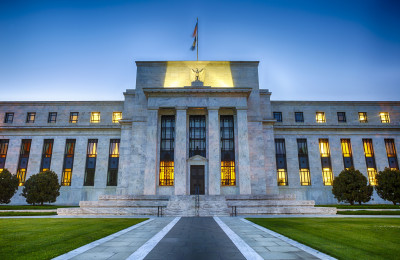
David Worsfold
A year ago, as the world was coming to terms with the reality of Donald Trump as the next incumbent of the White House, one topic that unnerved the financial markets was the prospect that he wouldn’t re-appoint Janet Yellen for a second term as chair of the US Federal Reserve.
Yet, that is precisely what he has done with his nominee Jerome (Jay) Powell expected to breeze through his Senate ratification on 28 November, ready to take up his new post on 3 February next year. In response, the markets have hardly batted an eyelid. How could they go from their fear of change at the Fed in November 2016 to calm acceptance today? Part of the explanation is that there was a fear of the unknown if Yellen went. The markets have generally been comfortable with her approach to monetary policy and, perhaps to a lesser extent, regulation.
The fear was there that a radical President Trump promising major policy overhauls in every sphere of government would opt for a disruptive change. A clutch of Stanford academics featured heavily in the speculation, all seen as hawks on monetary policy and favouring a much lighter touch on regulation. They have been passed over in favour of a known quantity who is unlikely to change the Fed’s course significantly. The 64-year-old Powell has been a Fed governor since 2012. He has backed Yellen on monetary policy and has a reputation as a thorough, pragmatic operator with a keen eye for the detail of policy. His mixture of private sector and government experience is also reassuring to market practitioners. He was originally a lawyer and was a partner at private equity firm Carlyle. He also served in the Treasury under President George W Bush in the 1990s. He grasp of the detail of policy has seen him take charge of the Fed’s response to the reform ultimate replacement of Libor, something he discussed in a recent interview with Risk.net.
Powell believes the markets are now addressing the need to review contracts that rely on Libor, although he says the Fed isn’t going to dictate what people do. “We’ve got to put in place back-ups for those contracts and we’ve got to get people writing contracts on new rates. We’ve selected a new rate and, as it relates to derivatives, we have a pretty good plan to transition them across.
By the end of 2012, this plan should work … We’re not telling people to get off Libor. We’re saying the market needs to be prepared for the fact it may not continue for much longer”. With his Senate confirmation hearing looming, he measured his words to Risk.net carefully –something that comes naturally to him – but offered some views on foreign currency clearing that will be welcome in the City of London as it prepares to fight European Union attempts to end Euroclearing in London. “We don’t think you need to clear all US Dollars in the US and all Euros in the Eurozone, as long as you can make and receive timely payments in those currencies and recognise the regulators of foreign CCPs [Central Counterparty Clearing Houses] are competently doing their jobs. You want to create large pools of trades that allow greater multilateral netting and reduce overall liquidity needs – and splintering central clearing by currency would fragment that and reduce netting opportunities, so it is not something we are generally for”.
The quiet, measured Powell easing into the Fed chair may be a comforting sight for the financial markets, but his appointment is not the end of the story as far as changes at the Fed are concerned. President Trump still has significant scope to reshape the Fed and push it in the more de-regulatory direction he prefers. There are several seats on the board of governors that will need to be filled over the next few months. Two seats were already vacant when Stanley Fischer announced his early departure as vice-chair last month. President Trump is likely to see these vacancies as an opportunity to give Randal Quarles, the Fed’s first vice-chair for financial supervision who he appointed earlier this year, some allies as he pursues his plan to lessen the Fed’s role in Wall Street.
